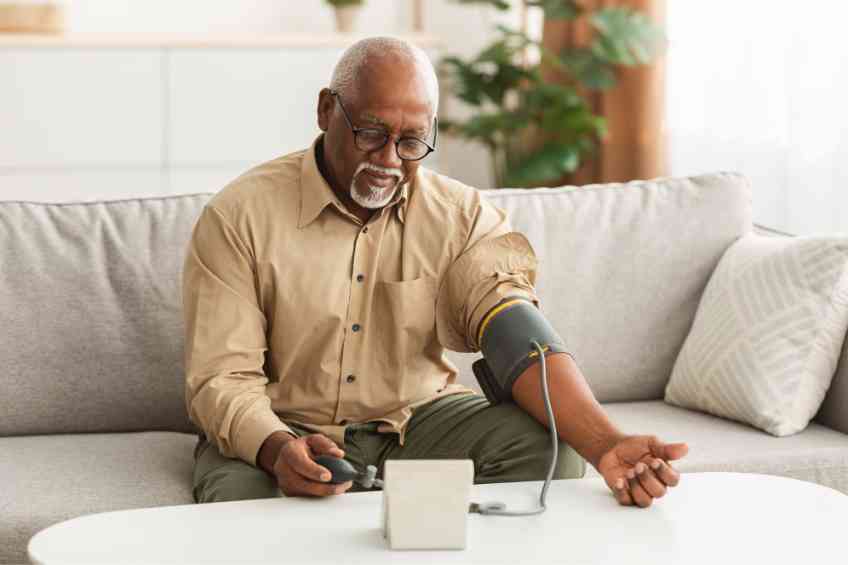By John Salak –
Hypertension brought on by high blood pressure is a killer, contributing to approximately 700,000 deaths annually in the U.S. alone. The Centers for Disease Control and Prevention notes it is also expensive to control, amounting to more than $130 billion in annual medical costs.
The good news is that increasing home monitoring efforts can substantially save lives and trim medical costs, according to research published by Elsevier. A rise in home blood pressure checks can also reduce the pervasive health disparities facing racial and ethnic minorities and rural residents by cutting back on cardiovascular events.
The study’s results are great news for the nearly 50 percent of American adults who deal with hypertension, which can lead to heart attacks, other cardiovascular issues and strokes.
“Our study is among the first to assess the potential health and economic impact of adopting home blood pressure monitoring among American adults with hypertension. We found that it facilitates early detection, timely intervention and prevention of complications, leading to improved control and better health outcomes,” announced the study’s co-leader Yan Li, a professor at Shanghai Jiao Tong University School of Medicine.
The team’s work involved analyzing data from the Behavioral Risk Factor Surveillance System and then projecting the impact of home blood pressure monitoring as opposed to traditional clinic-based care. The results showed that home monitoring could reduce myocardial infarction cases by 4.9 percent and strokes by 3.8 percent over 20 years.
The research also discovered that non-Hispanic Blacks, women and rural residents would avert more cardiovascular events and enjoy cost savings than non-Hispanic Whites, men and urban residents by embracing home monitoring. Rural areas would see a potential reduction of 21,278 myocardial infarction cases per one million people compared to a dip of 11,012 cases per one million for those in urban areas.
This reduction would be particularly significant since rural residents tend to have a higher prevalence of hypertension than urban residents and often face higher barriers to accessing primary care services.
Even when readily available, traditional clinic monitoring of high blood pressure and hypertension diagnosis has several drawbacks, according to the researchers. These include patients not visiting clinics often enough to offset problems and the accuracy of clinical tests being compromised by the reading differences between office and home assessments.
Home blood pressure monitoring can offset these problems and provide more comprehensive and accurate data compared to information collected sporadically at clinics. Despite its benefits, home monitoring is not widely adopted in the U.S. due to inadequate health insurance, minimal investment in preventive services and limited promotion by primary care physicians.
“Given that almost half of all adults in the U.S. are affected by high blood pressure, and considering the persistent health disparities in cardiovascular health, it is very important to advocate for the widespread adoption of effective and cost-saving strategies,” said study co-lead Donglan Zhang, Ph.D., an associate professor at New York University Long Island School of Medicine. “Home blood pressure monitoring empowers patients to take a more active role in managing their chronic conditions. Our findings provide compelling evidence for healthcare systems and payers supporting the broader implementation of this intervention.”













